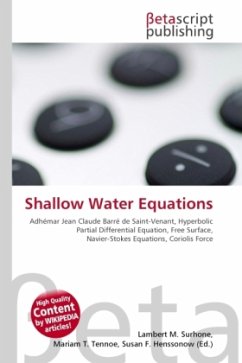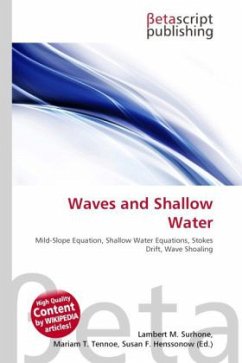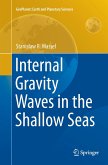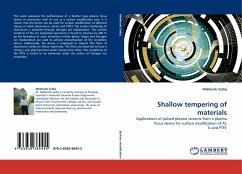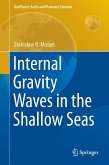High Quality Content by WIKIPEDIA articles! The shallow water equations (also called Saint Venant equations after Adhémar Jean Claude Barré de Saint-Venant) are a set of hyperbolic partial differential equations that describe the flow below a pressure surface in a fluid (sometimes, but not necessarily, a free surface). The equations are derived from depth-integrating the Navier-Stokes equations, in the case where the horizontal length scale is much greater than the vertical length scale. Under this condition, conservation of mass implies that the vertical velocity of the fluid is small. It can be shown from the momentum equation that vertical pressure gradients are nearly hydrostatic, and that horizontal pressure gradients are due to the displacement of the pressure surface, implying that the horizontal velocity field is constant throughout the depth of the fluid. Vertically integrating allows the vertical velocity to be removed from the equations. The shallow water equations arethus derived.
Bitte wählen Sie Ihr Anliegen aus.
Rechnungen
Retourenschein anfordern
Bestellstatus
Storno

